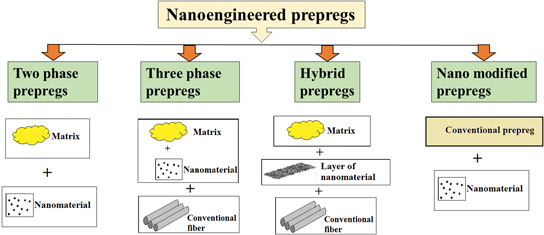Article contents
Prospects and challenges of nanomaterial engineered prepregs for improving interlaminar properties of laminated composites––a review
Published online by Cambridge University Press: 28 March 2017
Abstract

In the recent years, several investigators are incorporating nanotechnology, one of the most powerful trendsetters in material research, to conventional polymer prepregs to enhance mechanical properties of composite strucutures. The current paper outlines the role of nanotechnology in reinforcing resin and challenges for fabricating nanomaterial reinforced prepregs. As delamination is the most critical problem for composite materials, the current study only focuses the application nanotechnology as a possible solution to alleviate delamination problems in laminated composites. The importance of nanoengineered prepregs is discussed in a viewpoint of improvement in interlaminar properties of the laminated composite materials.
- Type
- Prospective Articles
- Information
- Copyright
- Copyright © Materials Research Society 2017
References
- 7
- Cited by





